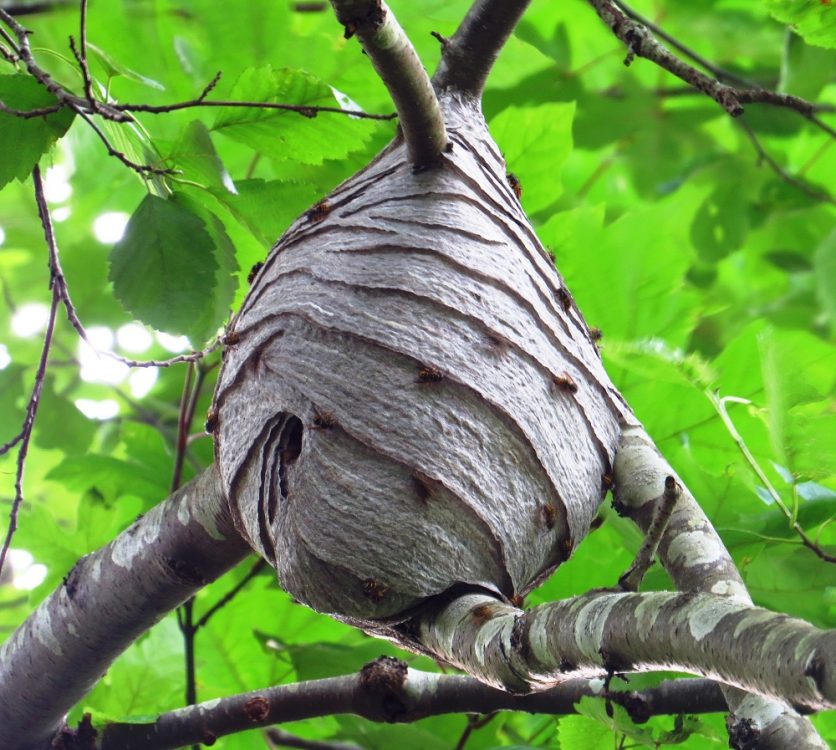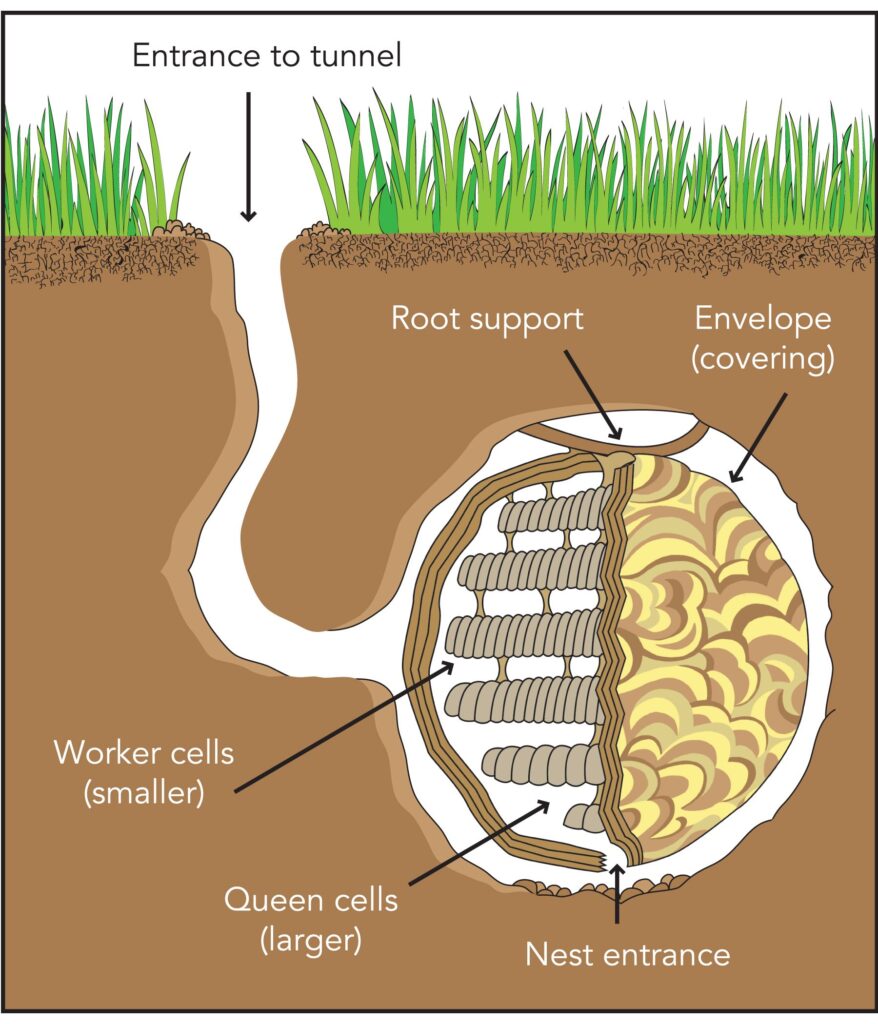When a wasp stings, it injects a venomous fluid under the skin of the victim. Yellow jackets have a smooth stinger, so they can sting more than once, and the sting can be very painful. Wasps will aggressively swarm, sting, and bite, and wasps are particularly angry in the late summer months and fall and will often attack unprovoked. Stings can ensue an allergic reaction which can be acute and will often set in fast. A single yellowjacket or wasp sting can cause a life-threatening reaction in a person who may be allergic, so it’s important not to neglect any stinging and seek medical assistance immediately.
Be very careful with your dog, as dogs will disturb nests and attract chaos very quickly, it is hard to control, rescue and help a dog when they are bolting around the forest being chased by angry wasps and you are putting yourself at great risk in the process.
Yellowjackets are carnivorous, primarily feeding on other insects like flies and bees. They also feed on fruits, carrion, and the nectar of flowers. Yellow jackets will forage for about 1.5km from their nest.


In early summer the worker wasps (female with aggressive stings) are focused on nest building and helping accommodate the drones (males with no sting who remain in the nest to fertilize) and the Queen while she produces eggs and nurtures offspring. There is much food around and the worker wasps are wholly focused on nest construction and achieving volume.
In late Summer when the nests are built, at maximum capacity and are highly active this means the worker wasps change roles to a defensive and attack mode responding to any kind of threat or smallest disturbance.

The nest has entrance guards who will raise the alarm if an attack is deemed necessary. Yellowjacket nest location and size can be sub terrain or suspended in trees or concealed spaces and can accommodate well into the thousands and can make their attacks extremely dangerous. It’s the sub terrain nests that are most concerning to trail users if disturbed.
Wasps in late summer and fall are particularly hangry. Hunger can turn to aggression when yellowjackets’ food sources start drying up and the wasps become desperate. The workers are in search of sugar for energy and its natures competition to find food sources in the forest. It is this time of year that trail users must be extra careful and avoid stumbling on or disturbing any nests.
Please report nest findings on trail forks (with a location pin and description if possible) and help to notify others and please be aware that UROC Trail Crew is not responsible for destroying or managing wasp & hornet nests at any given time.


